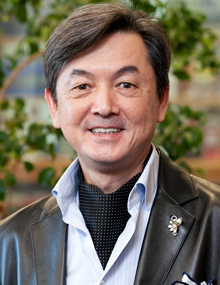
Organogenesis begins with the formation of patterned developmental fields during early embryogenesis, which provide environments appropriate for the induction of specific organs. Most organs emerge from primordia induced by interactions between epithelial and mesenchymal tissue and, following organ-specific morphological changes, develop into functional structures.
Our group is working to gain a more complete understanding of the roles of epithelial-mesenchymal interactions in organ induction, development, and morphogenesis. Using technologies developed in our group for the three dimensional (3D) control of epithelial stem cells and mesenchymal stem cells, we have generated regenerative primordia for teeth, hair follicles and endocrine tissue, such as salivary glands, and shown that these functionally integrate with surrounding tissue following transplantation into adult mice. By recapitulating organogenetic fields as seen in the early embryo to steer the self-organized formation of three-dimensional tissue-like structures from pluripotent stem cells, such as embryonic stem cells (ESCs) or induced pluripotent stem cells (iPSCs), we seek both to elucidate the mechanisms by which such fields induce organogenesis and to develop new technologies for use in regenerative medicine. We are also interested in using 4D cell dynamics imaging techniques to quantitatively analyze organ-specific morphogenesis, and to analyze, model, and simulate molecular pathways involved in their control, in the hopes of gaining new insights into the fundamental principles underlying organogenetic processes. Building on these fundamental studies, we further seek to conduct applications research towards the development of technologies for use in therapeutic organ regeneration.

A:…
A:…
t-tsuji[at]cdb.riken.jp